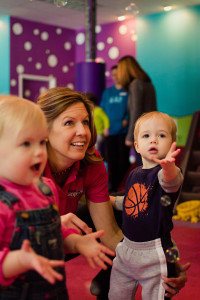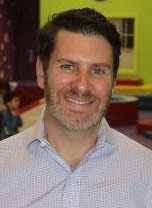Romp n' Roll Franchise Blog

There are a variety of business models among kids gym franchises so you may wonder which is right for you.
The business model used most predominately dates back to the 1970’s and is still utilized by the three biggest U.S. franchisors operating in this space today. This business model focuses primarily on the gymnastics aspect of a children’s gym business. Classes cater to a wide range of ages (babies to teenagers). Facilities usually feature one large space for these classes which can accommodate 30 or more children at a time. In recent years, these types of franchises have broadened their offerings by adding additional gross motor development programs like karate, dance, and sports skills but often these add-on classes represent a small portion of overall revenue. The benefit of this business model is that these franchises become the expert at a particular type of class. If a parent is purely interested in a preschool gymnastics class, for example, these programs can be very good. The downside, however, is that when the child or parent wants to try other types of classes, the franchise may lose the customer to other children’s franchises. In addition, many parents who want to get their child involved in gymnastics may choose to enroll in a full-service gymnastics center, which are usually less expensive and often employ more experienced specialty instructors.
To solve this problem, Romp n’ Roll has reinvented this old business model by offering families a much wider variety of classes. At Romp n’ Roll, children can participate in gymnastics, music, art, science, cooking, dance, and more. We even have a class which teaches “princess” and “superhero” skills! Our business model gives parents and children the opportunity to explore different types of kid’s classes all under the same roof which cannot only be cost effective for the parents, it tends to keep families enrolled longer. In addition, Romp n’ Roll caters to a narrow range of kid’s ages (zero through age 5). As a result, we are seen as the expert for this age group which makes for a logical starting point for parents of young children. In this era, parents are well informed about how critical the first 5 years are to a child’s brain development. So, they are motivated to find a program that fosters that development through innovative gym, art and music classes, parties, and camps.
One way to compare the two business models is to imagine the first as being vertical (a narrow range of services to a wide range of ages) and the other, such as Romp n’ Roll, being horizontal (a wide range of services to a narrow range of ages).
Both children’s franchise business models can be successful. It often comes down to which model the prospective franchise owner feels is the best fit for them, and for their community.

Michael Barnett is the Co-Founder and CEO of Romp n' Roll. In addition to leading the Romp n' Roll management team, Michael is an active member of the International Franchise Association, the National Association for the Education of Young Children, and serves on the Board of Directors for Connor's Heroes and Juniata College Center for Entrepreneurial Leadership. He and his wife, Babz, were featured on the first season of ABC-TV's Shark Tank.